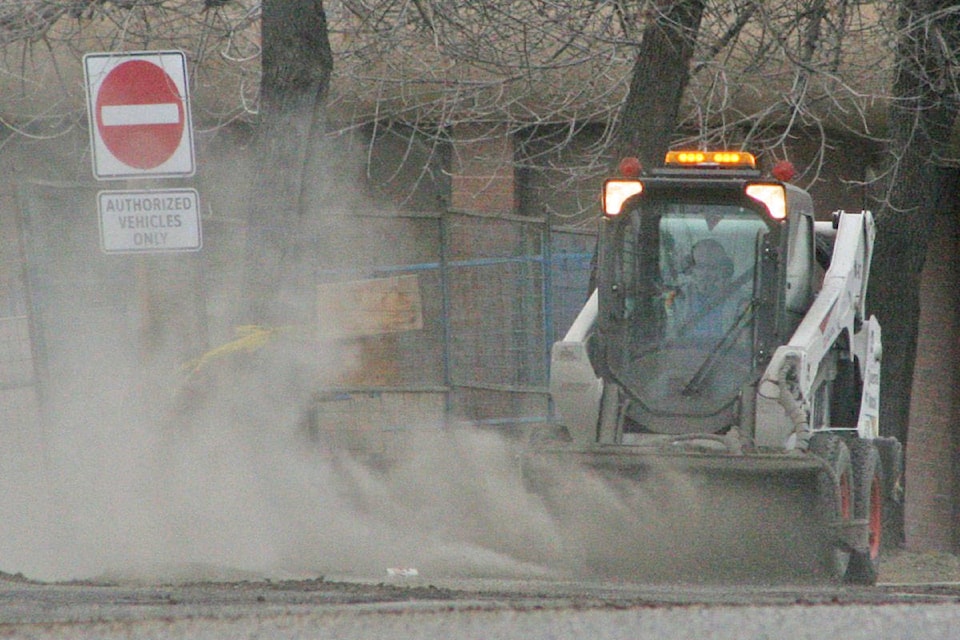UPDATE:
Quesnel’s dust advisory has finally been lifted.
“Changing meteorological conditions have improved conditions across the region,” the updated advisory reads.
According the the ministry of environment and climate change strategy, the amount of grit in the air is 46.6 micrograms per cubic metre, just under the provincial air quality objective of 50.
In the next little bit you are going to start seeing our sweeping crew. Our mechanical department has been working hard to get the equipment ready. When you see our Crews, please give them lots or room to work and have some patience as the equipment is not fast moving. pic.twitter.com/Tr0B4UQ0kl
— Emcon Quesnel (@EmconQuesnel) March 13, 2021
Emcon Quesnel tweeted on Saturday, March 13, warning residents to keep an eye out for their street sweeping teams.
“When you see our Crews, please give them lots or room to work and have some patience as the equipment is not fast moving,” their post reads.
ORIGINAL STORY:
That isn’t fog rolling along the streets and highways of Quesnel in recent weeks — it’s dust.
For days, Quesnel has been under a dust advisory from Northern Health and Environment Canada. Provincial air quality standards are set at 50 micrograms per cubic metre, and Quesnel was sitting at 88.3 Friday morning.
On Friday morning the level of dust in the air was triple the amount in Prince George and almost double Williams Lake.
Air quality meteorologist for the ministry of environment and climate change strategy, Gavin King, said he thinks the high levels of dust are caused by buildup of road sand.
“We have significant issues with traction material on the roads. Across the north … you see the same issue, it happens every spring. The snow melts, and you’re left with all that dust left on the road.”
The road sand is then whipped up and around by both wind and traffic.
King made a distinction between smoke, which he classified as fine particulate matter, and the “coarse” kind of dust in the air in Quesnel.
“We know there are health risks linked to particulate matter, and in particular coarse particulate matter, however we know that fine particulate matter is probably worse for you,” he said. “They’re different reactions. If you’re exposed to multiple days of anything that is bad for you, it’s just going to be worse.”
King said a chance of showers over the weekend could provide some relief for Quesnel.
“We won’t see a change in the dust until we see a change in the weather — rain or snow, or the traction material gets removed from the roads,” he said.
In the dust warnings sent out by the ministry, warnings and suggested best practices are given. The biggest one is avoiding exposure to high risk areas by staying indoors as much as possible if you are concerned.
“Exposure is particularly a concern for individuals with chronic conditions such as asthma, COPD, heart disease, and diabetes; respiratory infections such as COVID19, pregnant women, infants, and older adults,” the alert reads. “Persons with chronic underlying medical conditions or acute infections should postpone or reduce strenuous exercise until the advisory is lifted.”
Symptoms of exposure include eye or throat irritation, chest discomfort, shortness of breath and coughing or wheezing.
READ MORE: Dust advisory ends in Quesnel
READ MORE: Quesnel firefighters respond to blaze at closed Tolko Industries site
Do you have something to add to this story, or something else we should report on? Email: cassidy.dankochik@quesnelobserver.com
@GimliJetsMan
cassidy.dankochik@quesnelobserver.com
Like us on Facebook and follow us on Twitter.
